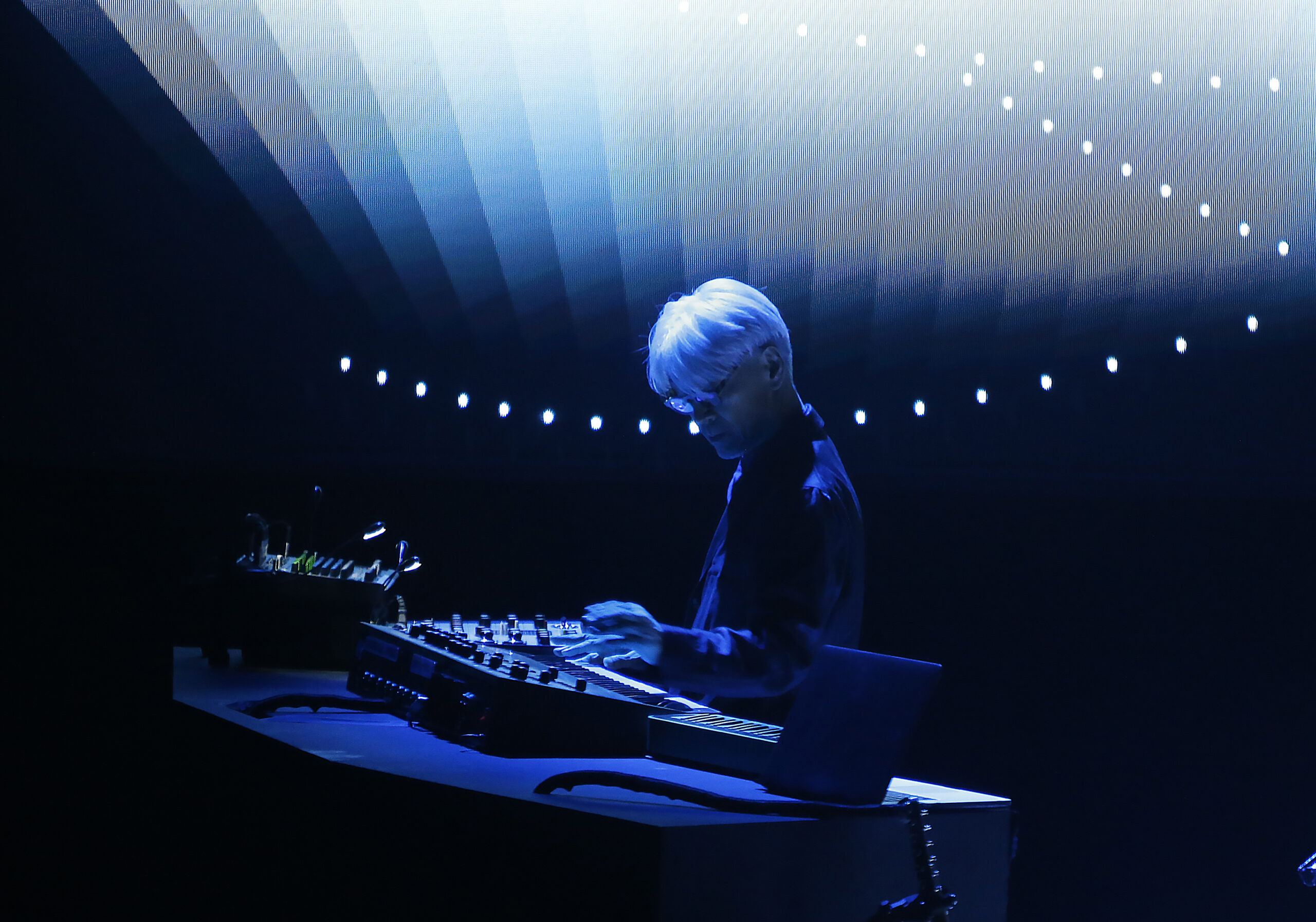How to even describe the late Ryuichi Sakamoto to someone who might not have heard of him? Just imagining the scope of his music strains the limits of thought, like pondering the size of the universe. There is no definitive entry point.
His most solid front-to-back records tend to be his ambient work from the 2000s onward, but get too lost in those and you’ll miss his exemplary career as a producer-arranger, his pioneering work as a member of Yellow Magic Orchestra, his enviable resumé as a film composer, and the occasional bizarre almost-masterpiece like the collab-heavy Beauty or the glam-prog freakout Left Handed Dream, with Sakamoto in resplendent makeup on the sleeve.
There are so many pieces that the whole is hard to glimpse, and I encourage anyone looking at this list to dig deeper. For now, here are a few historical milestones and personal favorites from the composer, who passed away on March 28 at 71.

Also Read
The Best Albums of 2023 (So Far)
Ryuichi Sakamoto – The Thousand Knives Of Ryuichi Sakamoto (1978)
Sakamoto was an ambitious university student with a budding career as a producer-arranger when music industry veteran Haruomi Hosono got in touch for a subversive new electronic project. But Sakamoto was already hard at work at Thousand Knives, whose juxtaposition of winking kitsch and staggering beauty has aged brilliantly — not least on its majestic title track, a snow-capped sprawler with a guitar solo for the ages courtesy of Kazumi Watanabe.
Yellow Magic Orchestra – Solid State Survivor (1979)
YMO’s early work now seems a little quaint (1981’s BGM still melts heads), but it’s tuneful and playfully subversive in the way it sends up Orientalist tropes. Sakamoto was perhaps tertiary in the band to Hosono and lead singer Yukihiro Takahashi, but two of the most consequential cuts on Solid State Survivor were his. “Technopolis” is one of many, many pieces cited as key to the birth of techno, and if the vocoded sloganeering is a bit dated, the kick drum goes a lot harder than Kraftwerk’s. “Behind The Mask” almost ended up being covered on Thriller by Michael Jackson — now that’s an alternate universe. (MJ’s version showed up on 2010’s posthumous Michael, and it’s amazing.)
Ryuichi Sakamoto – B-2 Unit (1980)
Forget predicting later trends in electronic music — this one easily stands beside later Autechre or some of the Aphex projects in its drum machine weirdness and almost free-jazz severity, with effects-laden percussion and gnarled electronics clanking like the keys of prepared pianos. “Riot in Lagos” was much-discussed among early hip-hop producers like Afrika Bambaataa and might’ve helped nudge rap drums in the direction of Rick Rubin or the Bomb Squad. Sakamoto’s key collaborator on B-2 Unit is British producer Dennis Bovell, another one of those guys who’s everywhere — he produced the Pop Group’s Y, wrote one of the best pop songs of all time in Janet Kay’s “Silly Games,” served as Linton Kwesi Johnson’s accompanist, and so on.
Ryuichi Sakamoto – 1996 (1996)
Sakamoto is maybe best known as a film composer. And he recorded some of his best work in the ‘80s, notably 1983’s Merry Christmas, Mr. Lawrence (the war drama co-starring Sakamoto and David Bowie, both looking equally chiseled and severe) and 1987’s The Last Emperor, for which his score won an Oscar. Music from both films and many others appear on 1996, a sort of greatest hits album performed with a small trio of piano, violin, and cello. Also present is a definitive piano rendition of “Bibo No Aozora,” which first appeared in a moody, slightly ungainly trip-hop version on 1995’s intermittently great Smoochy.
Alva Noto/Ryuichi Sakamoto – Insen (2005)
Sakamoto’s long-running collaboration with German clicks-and-cuts maestro Carsten Nicolai — which eventually led to the score for The Revenant — began in 2002 with Vrioon, The Wire’s Album of the Year. It’s a good one, if a little austere: it sounds like someone performing surgery on a piano. The best of their four albums together is 2005’s Insen, which coaxes a counterintuitive warmth out of a chilly palette of mostly digital glitches and piano. Also worth a listen is the 2018 live album Glass, where they actually use the walls and surfaces of a glass house to create tones — some of which sound alarmingly like glass breaking.
Fennesz/Ryuichi Sakamoto – Cendre (2007)
A lovely album with a simple formula: Austrian guitarist Fennesz kicks up a squall of processed noise, and Sakamoto plays in the extreme high and low registers of his piano.
Ryuichi Sakamoto – async (2017)
async was Sakamoto’s first solo album after being diagnosed with cancer in 2014. It contains one of the most poignant memento mori moments in music, a narration from the novel The Sheltering Sky, whose film adaptation Sakamoto scored: “How many more times will you watch the full moon rise? Perhaps 20.” At the same time, it’s one of Sakamoto’s most playful albums, and at least two journalists mistakenly thought “tri” — on which he coaxes all manner of sounds from the humble triangle, one of the most childlike instruments — had been digitally processed. (Async — Remodels is a fine remix album featuring latter-day acolytes like Yves Tumor and Arca, the latter of whom would feature Sakamoto deep into her five-part Kick series.)
Ryuichi Sakamoto – 12 (2023)
12 is one of Sakamoto’s most pleasant and easily digestible albums on first listen: simple miniatures for piano and synth, often processed through sheets of reverb that recall Harold Budd’s later albums like In The Mist. The deeper theme becomes clear the more you listen. The dying sustain of the piano is often punctuated with the composer’s labored breathing, and the tracks are sequenced chronologically — and if you suspected you had one more album in you, wouldn’t you sequence the tracks chronologically, too? One track is out of order: a minute-long recording of bells at the end. A representation of the afterlife, or the barrier you have to pass through to enter the afterlife? Only Sakamoto knows.




